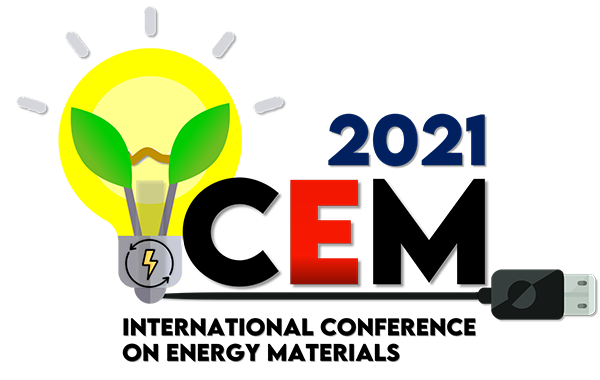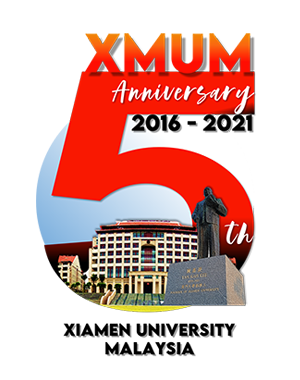Symposium EM2
Advanced Nanomaterials for Catalysis and Energy Conversion
Chair: Assoc. Prof. Dr. Wee-Jun ONG (XMUM)
Co-chair: Prof. Nanfeng ZHENG (XMU)
To date, nanomaterials have been vastly employed in a broad spectrum of disciplines to address challenges in the arena of energy and environmental science. Downsizing functional materials to the nanoscale can possess excellent features compared to their bulky structures. Furthermore, innovative strategies, namely morphological control, facet engineering, heterojunction construction, atomic modification and defect manipulation can substantially manipulate the optical, electronic, structural and textural properties of nanomaterials. Controlled size and crystal facets as well as assembly of nanoparticles into hierarchical architectures allow scientists to smartly engineer the active sites, thus giving rise to a new dimension of nanomaterials with robust catalytic activity and product selectivity. As such, the fascinating characteristics hold the key to fundamental advances in catalysis, electrocatalysis, photocatalysis, photoelectrocatalysis, CO2 conversion, H2O splitting, N2 fixation, fuel cells, solar cells, photovoltaic, air/water purification, seawater desalination, and so forth. This symposium will gather scientists from all corner of the world working in this emerging field, enabling a wide interdisciplinary exchange on the state-of-the-art advancement of nanostructured materials for catalysis and energy conversion.
Topics include, but will not be limited to:
- Nanomaterials for solar cells and photovoltaics
- Nanomaterials for thermal catalysis
- Nanomaterials for photoelectrochemistry
- Nanomaterials for photocatalytic H2O splitting, CO2 reduction, N2 fixation and environmental remediation
- Nanomaterials for electrocatalytic HER, OER, ORR, CO2 reduction and N2 reduction
- Nanomaterials for photothermal water vaporization and seawater desalination
- Computational materials design for catalysis and energy
- Integration of technologies for self-powered devices
Papers submitted to Symposium EM2 will be considered for publication in a special issue of Chinese Journal of Catalysis (IF 6.146, Q1). All special issue will be invitation only, and the deadline for paper submission will be announced in the invitation letter.
- Chair Prof. Hua ZHANG, City University of Hong Kong, Hong Kong PRC
- Prof. Tierui ZHANG, Technical Institute of Physics and Chemistry, China
- Chair Prof. Yujie XIONG, University of Science and Technology of China, China
- Prof. Erwin REISNER, University of Cambridge, UK
- Prof. Jorge GASCON, King Abdullah University of Science and Technology, Saudi Arabia
- Prof. Hongjin FAN, Nanyang Technological University, Singapore
- Prof Yury GOGOTSI, Drexel University, USA
- Assoc. Prof. Hao Ming CHEN, National Taiwan University
- Prof. Annemie BOGAERTS, University of Antwerp, Belgium
- Assoc. Prof. Kazuhiko MAEDA, Tokyo Institute of Technology, Japan
- Prof. John WANG, National University of Singapore, Singapore
- Prof. Marc T. M. KOPER, Leiden University, Netherlands
- Prof. Martin PUMERA, Brno University of Technology, Czech Republic
- Prof. Ghim Wei HO, National University of Singapore, Singapore
- Prof. Hongyu CHEN, Westlake University, China
- Prof. Ying YU, Central China Normal University, China
- Assoc. Prof. Brian SEGER, Technical University of Denmark, Denmark
- Prof. Bao Yu XIA, Huazhong University of Science and Technology, China
- Prof. Denny K. S. NG, Heriot-Watt University Malaysia, Malaysia
- Dr. Wibawa Hendra SAPUTERA, Institut Teknologi Bandung, Indonesia
- Dr. Kedar HIPPALGAONKAR, Nanyang Technological University (NTU); Institute of Materials Research and Engineering, Singapore
- Dr. Wai Yin WONG, Universiti Kebangsaan Malaysia, Malaysia
- Dr. Jasna JANKOVIC, University of Connecticut, USA
- Dr. Haresh MANYAR, Queen's University Belfast, UK
- Dr. Siva Krishna KARUTURI, Australian National University, Australia
- Dr. Emma LOVELL, University of New South Wales, Australia
- Dr. Ady SUWARDI, Institute of Materials Research and Engineering, Singapore
- Assoc. Prof. Joon Ching JUAN, Universiti Malaya, Malaysia
- Prof. Qiyang LU, Westlake University, China
- Prof. Hui PAN, University of Macau, China
- Assoc. Prof. Boon Tong GOH, University of Malaya, Malaysia
- Dr. Aleksandr SAVATEEV, Max Planck Institute of Colloids and Interfaces, Germany
- Dr. Mu XIAO, University of Queensland, Australia
- Dr. Mengmeng HAO, University of Queensland, Australia
- Prof. Kajornsak FAUNGNAWAKIJ, National Nanotechnology Center, Thailand
- Dr. Yin Long ZHU, Monash University, Australia
- Assoc. Prof. Aung Ko Ko KYAW, Southern University of Science and Technology, China
- Dr. Youngkook KWON, Ulsan National Institute of Science and Technology, Korea
- Assoc. Prof. Huabing TAO, Xiamen University, China
- Dr Xingke CAI, Shenzhen University, China
- Dr. Sergey KOZLOV, National University of Singapore, Singapore
(Last Updated 11 October 2021)
Correspondence:
Assoc. Prof. Dr. Wee-Jun ONG
weejun.ong@xmu.edu.my


